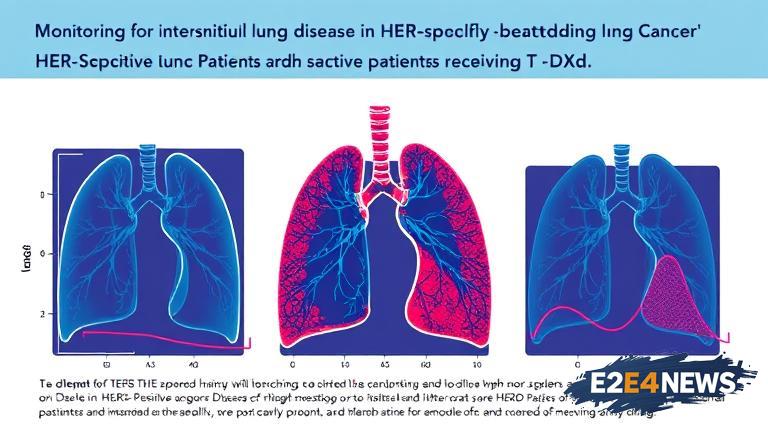The treatment of HER2-positive breast cancer has undergone significant advancements in recent years, with the introduction of novel therapies such as T-DXd. However, as with any cancer treatment, there are potential side effects that need to be closely monitored. One of the most concerning side effects associated with T-DXd is interstitial lung disease (ILD), a condition characterized by inflammation and scarring of the lungs. According to Dr. McArthur, monitoring for ILD is crucial when administering T-DXd to patients with HER2-positive breast cancer. This involves regular imaging tests, such as chest X-rays and CT scans, to detect any signs of lung damage. Additionally, patients should be educated on the symptoms of ILD, such as shortness of breath and coughing, and instructed to report any concerns to their healthcare provider immediately. Early detection and treatment of ILD are critical to preventing long-term lung damage and improving patient outcomes. The incidence of ILD in patients receiving T-DXd is relatively low, but it is essential to be vigilant and proactive in monitoring for this potential side effect. Dr. McArthur emphasizes the importance of a multidisciplinary approach to patient care, involving collaboration between oncologists, radiologists, and pulmonologists to ensure that patients receive comprehensive and coordinated care. By working together, healthcare providers can optimize treatment outcomes and minimize the risk of ILD and other side effects associated with T-DXd. Furthermore, ongoing research is focused on developing strategies to predict which patients are at highest risk of developing ILD, allowing for more targeted and effective monitoring. In the meantime, healthcare providers must remain vigilant and committed to providing high-quality care to patients with HER2-positive breast cancer. The management of ILD requires a thorough understanding of the condition, as well as the potential risks and benefits of T-DXd treatment. As the treatment landscape for HER2-positive breast cancer continues to evolve, it is essential to stay up-to-date on the latest developments and advancements in the field. By doing so, healthcare providers can provide the best possible care for their patients and improve outcomes for those affected by this disease. In conclusion, monitoring for ILD is a critical component of T-DXd treatment in patients with HER2-positive breast cancer, and healthcare providers must be proactive and vigilant in their approach to patient care.
